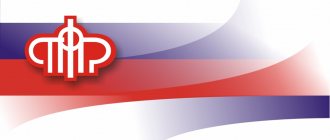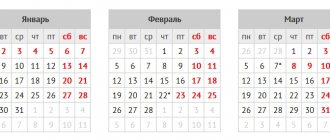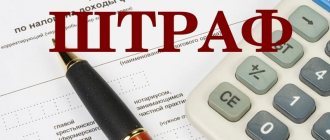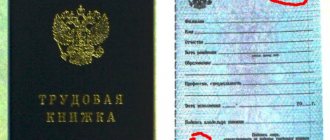Certification of workplaces has always been a headache for responsible managers. The changes that have taken place will further upset the nerves of not only responsible, but also irresponsible employers, because no one is exempt from inspection. However, when carrying out the reform, the legislator first of all sought to secure everyday work, to provide workers with those guarantees that are required by law, but in fact are ignored. And the new measures of responsibility are designed to instill in entrepreneurs one simple truth: “if you hire people as subordinates, provide them with humane working conditions.”
Last changes
It is everyone’s right to carry out their work activities in safe conditions. Russian reality makes adjustments to this axiom.
According to the law, an employer who has people under his command, no matter how many, is obliged to protect them from the negative factors inherent in the workplace. At least 0.2% of the money spent by a given organization on the production of goods must be invested in labor protection. The amount in reality turns out to be insignificant, but even this is not always spent. Often people do not receive basic protective equipment, not to mention compensation for working in difficult conditions.
Certification of workplaces was aimed at identifying dangerous, harmful production conditions and adjusting existing factors to the standards established by the state.
But, as life has shown, the certification was carried out for show and did not have serious, far-reaching intentions of the management to improve the working life of the staff. In many ways, this happened because there was no special legislative act, and the punishments were not particularly impressive.
The end of fictitious workplace certification was marked by the adoption of the law “On Special Assessment of Working Conditions” in 2013. It redefines the appraisal campaign.
SOUT is a set of measures that help recognize unfavorable conditions and assess their impact on workers.
In general, the essence of a special assessment does not differ from the essence of certification. The key differences are the detailed regulation of the procedure for its implementation and more severe penalties for failure to carry out or delay.
The results of the SOUT are used for rather bland but necessary purposes, such as prevention or control. But, in addition, the results can provide benefits to employees, such as an increased rate of contributions to the Pension Fund, guarantees and compensation.
Therefore, the team is more than interested in conducting a proper assessment. And the law allows employees to inquire about the progress of the inspection, ask questions and appeal its results. And union representatives can even initiate an unscheduled assessment. But first things first.
Certification process
There are three stages of certification, this is an assessment of: hygiene standards, injury risk, and protection. Based on the results of the certification, a comprehensive assessment is concluded. When checking workplaces in production, the impact of the following factors is checked: biological, chemical and physical. When assessing working conditions, the intensity of work and its severity are checked.
Stage 1. Hygiene assessment
It is carried out in accordance with the guidelines: R 2.2.013-94 and R 2.2.2006-05. Sanitary working conditions are assessed, whether hygiene rules are observed, whether there are any violations on the part of the employer, whether all conditions for the safety of the employee have been created. Laboratory examinations and sampling are carried out.
Based on the assessment results, working conditions are divided into 4 hazard classes: optimal, acceptable, harmful and dangerous.
Stage 2. Injury assessment
During the assessment, work equipment is checked, namely: operational documents; is there any protection when working on this equipment; the presence of fences, signal markings, blocking, etc.; serviceability of signals about breakdown, emergency start, power outage, etc.; protection of equipment and electrical wiring from external influences. The tools and devices needed for the job are assessed to see if they comply with the standards.
The commission is guided by the following requirements for protection from: mechanical influences, exposure to electricity, toxicity with chemicals, exposure to temperatures, etc. After the assessment, working conditions are divided into three classes: optimal, acceptable, dangerous.
Stage 3. Personnel protective equipment assessment
Company employees are required to be provided with the necessary protective equipment. They must meet the following requirements: have certificates, comply with standards, meet actual working conditions. If at least one non-compliance with the procedure is detected, the workplace is considered not provided with protective equipment.
Final assessment of working conditions
Upon completion of the certification, a comprehensive assessment of working conditions is carried out, based on the results of all three stages. After which a final decision is made - whether the workplace complies with state regulatory requirements or does not comply.
Goals
Certification of workplaces was aimed at maintaining the health of workers, preventing accidents and occupational diseases, identifying the usefulness or uselessness of protective equipment, and motivating management to improve the working environment.
SOUT has similar goals, and additional ones have appeared:
- Unification of the procedure. Previously, there were as many as 3 verification procedures: certification of workplaces and state examination of working conditions, regulated by the Labor Code, SOUT, provided for by the Federal Law “On Insurance Contributions”. The legislator noted: it is necessary to combine these procedures. Then the businessman will have to bother only once, and the results of the check will be used to the widest extent.
- Determination of hazard classes. When a person works in unfavorable conditions, by law he is entitled to certain compensation, such as a shortened working week or additional leave. Harmfulness/danger can be identified precisely based on the results of the assessment assessment. So, without a special rating, you shouldn’t count on a can of condensed milk.
- Calculation of the additional tariff for contributions to the Pension Fund. This tariff is provided for persons applying for preferential retirement.
- Resolution of labor conflicts. If an employee complains to the inspectorate or to the court about poor conditions, only the documents on SOUT will justify management.
Who conducts the special assessment and how?
Let's start with who is doing the special assessment. The law places the responsibility to conduct and finance the assessment squarely on the employer. It is he, regardless of whether it is a legal entity or an individual entrepreneur, who organizes the assessment of the employees’ workplace.
Now let's take a closer look at the timing of the special assessment, which is of no small importance. The timing directly depends on the type of assessment - planned or unscheduled . The planned one is carried out at least once every five years. Five years must be counted from the day on which the report on the previous special assessment was approved. At the request of the employer, a special assessment can be carried out even before the previous one expires. This is possible if workplace conditions are improved. The question arises, why carry out a premature assessment, and not wait for the next one? The improvement will result in savings on insurance premiums, employee compensation and personal protective equipment.
The need for an unscheduled assessment arises in the event of a change of office and the introduction of new workplaces. It must be carried out within 6 months from the date of their commissioning.
The law also provides for other cases of unscheduled assessment:
- when the technological process changes;
- replacement of equipment;
- when the composition of the raw materials or materials used changes;
- after an accident at work or the establishment of an occupational disease due to the influence of dangerous or harmful factors;
- at the request of the trade union;
- when changing personal or collective protective equipment, etc.
Moreover, during an unscheduled assessment, only jobs affected by the changes are subject to it. The procedure is similar to the procedure for planned certification and is contained in the order of the Ministry of Labor of the Russian Federation.
A few more words about the special assessment of similar jobs. Very often you can see that several employees work in the same conditions, performing the same functions, which means their jobs are identical. In this case, the assessment is carried out in relation to 20% of workplaces, but not less than two.
Similar means that the places are located in the same type of premises, their ventilation, air conditioning, heating and light systems are the same. It is also important that the equipment, materials and raw materials used by employees in similar places must be of the same type, and personal protective equipment must be the same.
To begin a special assessment, an appropriate commission is created and an organization specializing in its implementation is attracted . Usually a civil law contract is concluded with such an organization. The head of the commission is the employer himself or his representative. It necessarily includes trade unionists, if there are any at the enterprise, and a labor protection specialist serving this organization.
Then experts begin to study workplaces and identify those that are exposed to dangerous or harmful factors. Those places where such factors are absent are included in the declaration, which is subsequently submitted to the labor inspectorate. Where these factors exist, they must be carefully measured. Each location is assigned a working conditions class.
The last stage is the commission’s report, which contains the following data:
- list of workplaces indicating dangerous and harmful factors;
- protocols of all measurements and tests;
- expert opinions;
- and etc.
The employer familiarizes its employees with the report against signature. The review period is one month. If there is a website, information from the report is published on it.
In this article you can see the rules and a sample of filling out the specifications for the supply agreement.
If you are interested in what factoring is and what types there are, read about it here.
Who is exempt from assessment
Certification has long provoked controversy: is it necessary or not to check office plankton sites? The new Federal Law put an end to the dispute. We need to check. A special assessment of working conditions is an inevitable event for all entrepreneurs without exception. Even if employees are sitting in a clean, comfortable office and pressing keys on a laptop, this does not exempt their management from checking.
The jobs of people working are exempt from SOUT:
- remotely;
- at home;
- for individuals who do not have individual entrepreneur status.
What is the cost of workplace certification?
The cost of SOUT consists of a large number of components. Initially, the organization authorized to conduct certification assesses the upcoming scope of work based on information provided by the employer. During an external inspection of workplaces, experienced specialists immediately identify those where there are no dangerous factors for health and life, therefore, the procedure for them will be assessed at the minimum rate.
For those workplaces where, during an external inspection, the risk of harmful factors was determined, tariffing is carried out after additional study. The cost of work is also affected by the availability of similar types of jobs - for them, regardless of the labor intensity of the procedure, experts will receive a large discount on the cost.
The employer's task is to competently compile a list of workplaces to be assessed and identify similar zones, which will lead to large savings. In general, the cost of certification is determined according to the following criteria:
- scope of work to be done
- number of jobs, their complexity and specificity
- number of similar plots
- complexity of the production process and associated environmental factors
- localization is an important aspect for network companies, which is associated with additional transportation costs, since experts will have to move from one branch or representative office to another to carry out a range of work
- carrying out laboratory research and measurements
- preparation of documentation (the availability of documents from previous certification will significantly simplify the process and, therefore, lead to cost reduction)
- existing special requirements for certification for a specific enterprise
As a result, the cost of SOUT can vary from 1.4 to 3.0 thousand rubles. for one workplace. The complexity of the process causes significant costs.
Top
Write your question in the form below
Conducting an assessment
What I thank the new Federal Law for is the meticulous schedule of the procedure. The SOUT order is as follows.
- Formation of the commission. The commission is created from an odd number of people. It is imperative to include a labor protection specialist. If there is a trade union, its representative also becomes a member of the commission. As with the former certification of workplaces, a schedule is discussed.
- Establishing a list of evaluated jobs. When places are similar, not all are checked, but 20% of the total (but not less than 2). By similar places we mean those with the same level of noise, lighting, and ventilation systems, where workers perform the same duties, using the same type of equipment and protective devices.
- Agreement with the company. The Ministry of Labor took care of entrepreneurs in order to avoid cooperation with deceiving organizations and indicated on its website a list of approved companies. It is necessary to conclude a civil contract with her. When certifying workplaces, it was possible to involve not one, but several organizations. And now such a possibility is not excluded. Expert appraisers are not members of the commission; they act independently.
- Transfer of necessary documents to experts. These are the Charter, job descriptions, tax identification number, staffing table, etc. There is no need to withhold any documents or information about the specifics of the company’s activities. Appraisers are like doctors: they tell only the truth for their own benefit.
- SOUT according to the methodology approved by the Ministry of Labor. A distinctive stage of the special assessment procedure compared to workplace certification is identification. Harmfulness or danger has been identified - it is necessary to conduct research to identify its degree and assign a class or subclass. If, based on the results of the special assessment and assessment, absolutely no unfavorable factors are identified, the director submits a declaration of conformity to the inspectorate. It is valid for 5 years. During these 5 years, no injuries, self-harm, other misfortunes or occupational diseases occurred in the company - viability is extended for another 5 years. Identification is not carried out in certain cases, for example, if a previous assessment has already identified harmfulness. We need to move straight to research.
- Reporting. You are given 3 days to send a copy of the report to the appraiser.
- Results of SOUT to the people. After approval of the report, the employer is obliged to demonstrate it to the workforce against signature. According to previously existing legislation, the conclusions of workplace certification were communicated to workers within 10 days, now the period is 1 month.
- Posting information about the results of the inspection on the website (if there is one). This is a new requirement; it did not exist at the time of workplace certification.
- Form 4-FSS. A report on this form must certainly be sent to the insurance fund.
- From words to deeds. Next comes the most difficult thing: using the results of the special assessment in practice. First, certain employees' employment contracts must be amended or supplemented to include hardship bonuses. Secondly, contributions to the Pension Fund are calculated according to new tariffs, depending on the hazard class. Previously it was 6% or 9%, but now it’s from 2 to 8% if the conditions are harmful or dangerous. Increased tariffs are applied precisely based on the results of the SOUT. That’s why pensioners, when they tearfully, when they menacingly ask to submit the results of the special assessment on time.
The purpose of certification or special assessment of working conditions
The inspection is carried out in order to bring working conditions to established standards. To do this you need:
- Check the condition of workplaces;
- Change the amount of insurance premiums in case of injury;
- Make a list of persons who need to undergo a medical examination;
- Provide personnel with protective equipment;
- Change the work schedule for those working in hazardous conditions (shorten the working day, establish additional leave, etc.);
- Change the process technology or suspend the work of the workshop;
- Bring job titles into compliance with the All-Russian Classifier of Occupations;
- Apply sanctions for violations of labor protection.
Deadlines
A planned assessment, like the previous certification of workplaces, should be carried out once every 5 years. When you have approved the SOUT report, start counting down.
The legislator has provided time for the transition and getting used to the new rules. If workplace certification was carried out before the end of 2013, a special assessment could not be carried out for a further 5 years.
But the deadline expired in December last year. So in 2020 an assessment will have to be carried out. Honestly, it should have been done back in 2018. Labor inspectors may well show an unhealthy interest in delaying deadlines.
In addition to the planned one, there is an unscheduled SOUT. The list of reasons for its implementation has been slightly modified in comparison with the reasons for unscheduled certification of workplaces.
An unscheduled assessment is inevitable if:
- new jobs are beginning to be exploited;
- Based on the results of state supervision, violations of the Federal Law “On SOUT” were discovered, and the entrepreneur received an order to conduct an unscheduled special assessment;
- there was an injury, mutilation or occupational disease, they arose due to the influence of the work environment;
- other reasons.
An unscheduled emergency assessment must be carried out within 6 months after the occurrence of such situations (sometimes within 12 months).
What should you do now?
A special assessment is a comprehensive set of measures that are aimed at identifying dangerous, harmful production factors, as well as assessing the level of their impact on employees, taking into account fluctuations in the actual value and the established standard.
The main task of a special assessment is to determine whether the conditions of the workplace comply with the requirements established by law, and to identify workplaces in which working conditions are harmful or dangerous. Workers working in such conditions must receive appropriate compensation and additional guarantees. A special assessment is carried out by all employers, without exception : both at various types of enterprises and individual entrepreneurs. Workplaces of the following categories are not subject to inspection:
- belonging to workers who are engaged in home work;
- employees working remotely;
- employees of employers - individuals who are not individual entrepreneurs.
Previously, certification was required only at those workplaces in which equipment, hand tools, machines, mechanisms, installations, devices, vehicles, apparatus were used, or where sources of danger were located. Nowadays, inspection applies to any workplace, regardless of the factors and criteria applied in the past. This means that a special assessment of office staff jobs is also necessary. Before the law was passed, the issue of office workspaces was controversial.
To carry out this special assessment, a special organization is involved, whose experts professionally assess working conditions.
The legislator was also concerned about the transition period. An employer who has certified a workplace under the old legislation (before January 1, 2014) is exempt from the obligation to conduct a special assessment until the expiration of the results of this certification. But no more than until December 31, 2020 . The results of certification are also used for special assessment tasks - for organizing medical examinations, for informing employees about working conditions, for providing workers with personal protective equipment, calculating compensation, etc.
For companies that have workplaces with dangerous or hazardous working conditions, they must conduct an assessment immediately. The same as with jobs that allow an employee to take an early retirement pension in old age. Other organizations conduct special assessments until December 31, 2020. The certification of workplaces, which was carried out in 2014, is considered illegal, and its results cannot be used. This is discussed in a specially published Letter from the Ministry of Labor of the Russian Federation.
Detailed information about conducting a special assessment is in the following video:
Responsibility
The highlight of the program is Article 5.27.1 of the Administrative Code. It is she who establishes punishment for not caring about people.
The article states that failure to conduct a special assessment or failure to comply with the procedure is punishable by a fine:
- officials – 5 – 10 thousand;
- legal entities - 60 - 80 thousand;
- entrepreneurs - 5 - 10 thousand rubles.
Previous fines for workplace certification were significantly less. Entrepreneurs risked one thousand - five thousand, and legal entities - thirty - fifty thousand.
Willful employers who repeatedly violate the law are punished as follows:
- officials - a fine of 30 - 40 thousand rubles, or suspension from 1 to 3 years;
- entrepreneurs – a fine of 30–40 thousand, or suspension of work for up to 3 months;
- legal entity - a fine of 100 - 200 thousand or suspension of work for up to 3 months.
Article 5.27.1. The Code of Administrative Offenses provides for a warning as a punishment. The Ministry of Labor focused on the fact that this measure will be a priority for small businesses. Employers may be sent a warning indicating a time frame for correcting violations.
Since 2020, data on SOUT is stored in FSIS, the federal state information system. Experts warn that automatic fines are planned to be introduced in 2020. If the system does not have information about a special assessment from a specific company, a fine is calculated automatically. But the procedure for automatic collection of fines has not yet been approved.
Criminal liability for non-compliance with labor protection is provided for in Art. 143 of the Criminal Code. As before, when certifying workplaces, failure to carry out or negligently carried out the special assessment and assessment, resulting in damage to the health or life of an employee, can result in a fine, correctional labor, or prison.
If you look at practice, you can see that labor inspectors have already become more active. Data on fines imposed are published on the websites of regional labor inspectorates for the edification and intimidation of the irresponsible.
There are also active orders to appear and give explanations as to why the special assessment was not carried out within the established time frame.
Sanctions for non-compliance with certification rules
For violation of the rules established by law, as well as for deliberate evasion of its implementation, sanctions are required in accordance with administrative legislation. The company may be fined, or even worse, a ban on conducting activities may be imposed for a fairly long period.
Test equipment
In particular, an individual entrepreneur faces a fine of 5,000-10,000 rubles. or its activities may be suspended for a period of up to 90 days. For legal entities, more severe penalties are provided - a fine of 60,000-80,000 rubles. or suspension of work for a period of up to 3 months. Entrepreneurs risk losing not only their profits, but also their reputation, so delaying certification is not in their interests.
For the court, it will be clearly proven that the management of the enterprise is guilty if an accident suddenly occurs. And in this case, not administrative, but criminal punishment will follow in the form of correctional labor for two years or a fine of up to 400 thousand rubles.
If the results are positive, the company will be able to take advantage of the following benefits:
- By improving working conditions, losses associated with sick leave payments and payment for downtime are reduced.
- The enterprise gets the opportunity to clarify and optimize the list of workplaces where workers received additional payments for “harmfulness”.
- Reduce the amount of payments for accident insurance.
- If the inspection is carried out in a timely manner, partial compensation is provided in the form of 20% of the amount of insurance contributions to the Social Insurance Fund.
SOUT is an indicator of the employer’s law-abiding nature and its business reputation.
Adviсe
You cannot renounce carrying out SOUT under any pretext, so remember a few tips that will make this process painless:
- Check the appraiser company. Request its charter documents: SOUT is indicated as a key area of activity - everything is fine and wonderful. Experts must be certified, and one of them must have a medical education of a certain specificity. Finally, the organization has a testing laboratory within its structure. Meeting these requirements means that the appraisal company is reliable and can be dealt with without fear. Taking into account the sad experience of workplace certification, when many scammers were operating, the Ministry of Labor put together a list of all organizations allowed to carry out the assessment.
- Don't skimp on appraisers. There are 3 categories of jobs: office, 1st and 2nd categories. It is clear that assessing the place of a lawyer working in hothouse conditions is not the same as assessing a metallurgist who has been thrown into the fire in the literal sense. Even the Ministry of Labor states that it costs 2,500 – 4,000 rubles to evaluate one workplace. And if we are talking about a place that requires measuring the level of chemicals, the price can jump three times. And this is justified. The price consists of the remuneration of experts, wear and tear of equipment, the cost of consumables, and the use of expensive evaluation instruments. Companies that offer suspiciously low prices may conduct an assessment in such a way that the first inspection will result in a fine for this filthy letter.
- For SOUT, as before for certification of workplaces, the employer pays. But the Social Insurance Fund can return part of the money given to appraisers in the form of a discount. To receive a discount for carrying out a special assessment, you need to submit to the insurance fund an application for a discount, a plan of occupational safety measures, a cash support plan, and all documents for a special assessment. The discount from the Social Insurance Fund on the insurance rate can reach 20%.
- Improved working conditions - order a new assessment, even if it’s not due yet. This will save on deductions and employee benefits.
Who assesses working conditions?
Every employer of any form of ownership (individual entrepreneur, legal entity) is required to organize certification. It is carried out by the certification commission and an accredited organization engaged by the enterprise on a paid basis. The composition of the commission is approved by the employer and includes:
| For large organizations | For small businesses and small businesses |
| Representatives of the manager (heads of structural departments, lawyers, human resources workers, payroll accountants, medical workers, etc.), one of them is appointed to head the commission. | The employer or his representative. |
| Occupational safety specialist. | A specialist hired by employers to perform labor protection functions. |
| Trade union member. | Trade union member. |
| Representative of an accredited organization. | Representative of an accredited organization. |
Tasks of the commission:
- Manage and control all stages of the audit;
- Collection of necessary documents and their study;
- Compiling a list of workplaces that will be inspected;
- Checking the compliance of the names of professions and positions with the Unified Directory;
- Numbering of workplaces;
- If necessary, propose changes to the employer’s obligations in the employment contract (providing protective equipment, changing the work schedule, providing salary bonuses for harmful activities, etc.);
- Developing a plan to bring places into compliance with standards.
An accredited organization is an independent entity. An employer may involve several organizations.
- Tasks of the certifying accredited organization:
- Determine measurement methods and the composition of specialists who will carry them out;
- Study documents providing labor conditions;
- Request for clarification on issues that arise.
According to the agreement, the certifying accredited organization must:
- Make the necessary measurements;
- Assess the compliance of places with standards;
- Prepare an inspection report.
An accredited organization has the right to refuse to conduct an inspection if the necessary documents are not provided or if there are no conditions for measurements.
According to Federal Law No. 426, ed. dated 01/01/2014, the following requirements are imposed on accredited organizations performing SOUT:
- License to conduct SOUT.
- The team must include at least five experts with certificates and at least one expert expert with a higher education in any of the specialties: a general hygiene doctor, a laboratory research specialist, an occupational health doctor.
- Availability of an accredited research laboratory.
If the organization does not comply with the requirements, its decision will not be valid.
Goals and criteria for certification
The purpose of such a thorough inspection is to identify conditions that are life-threatening or harmful to the health of workers. The inspection commission is guided by the provisions of Article 209 of the Labor Code, which contains all the basic state requirements for labor protection. The employer is obliged to carry out measures established by the state to bring working conditions into compliance with accepted standards.
According to the sixth part of Article 209 of the Labor Code, a place to work means a specially equipped place where an employee stays for the entire shift or day, and at the same time his activities are controlled by employers.
Ministerial order number 590Н, issued in December 2012, amended the previously valid order number 342Н.
Currently, do not require certification :
- office-type places where workers are not directly involved in the production process and special equipment;
- places where employees work exclusively with household or copying (office) equipment.
At the same time, the list of places that require thorough and regular inspection (at least once every five years) is quite extensive.
These include:
workplaces related to the storage, use (application) or transportation of various substances and materials;- places where the use of various tools (electrical, mechanical or manual) is required;
- places with potential sources of danger to humans (for example, the presence of high-voltage electrical cables, electromagnetic radiation, vibrations, and so on);
- places where various equipment is used, repaired, debugged or tested (transport, mechanisms, machines, installations, devices and other technical devices);
- places where workers are busy working on various technical equipment, machines, vehicles, installations and apparatus.
What changes have been made?
The latest edition of the legislation on special assessment of working conditions took place on May 1, 2020, with the adoption of the amendment law No. 136-FZ.
During the latest revisions, the following articles and provisions have been revised:
- Clause 2 of Part 2 of Article 4 , which provides for the employer’s obligations to ensure a safe working environment, was supplemented with a provision obliging the employer to analyze workers’ proposals to improve working conditions and take appropriate measures;
- Article 10 , which defines the features of identifying harmful and dangerous factors in production, was supplemented by Part 8 , which provides for the following powers of the expert: study of documents related to the technological process, operation of equipment, work discipline and other regulations, rules, charters and resolutions affecting labor safety ;
- carrying out workplace surveys;
- presence while the employee performs his duties and supervision of him;
- other prescribed actions necessary to identify harmful effects;
- Part 1 , which provides for the specifics of compiling a report on places in which no harmful factors were found, was expanded by the condition that such a declaration procedure is maintained for workplaces where hazardous exposures were found to be within acceptable health standards;
- part 1 , which provides a list of information constituting the results of the study, was set out in a new edition in paragraph 5 , establishing the preparation of a protocol on the effectiveness of personal protective equipment;
- Part 2 is set out in a new edition , according to which an extraordinary special inspection is carried out within 6 and 12 months for certain conditions specified in Part 1 of the same article;
- Part 1 has been set out in a new edition , obliging the inspection organization to send all information about special labor assessments and their results to the unified federal information system;
General rules for checking workplaces
If it is necessary to draw up a test report when a vacancy opens, the expiration of a five-year period or the receipt of a complaint, the administration initiates certification. The verification begins with the issuance of an order. The content indicates whether a special assessment is carried out for vacant jobs; the executing organization and the composition of the internal commission are also indicated. In addition, an engineering specialist and the manager himself are involved in the events.
Job certification is valid for how many years









